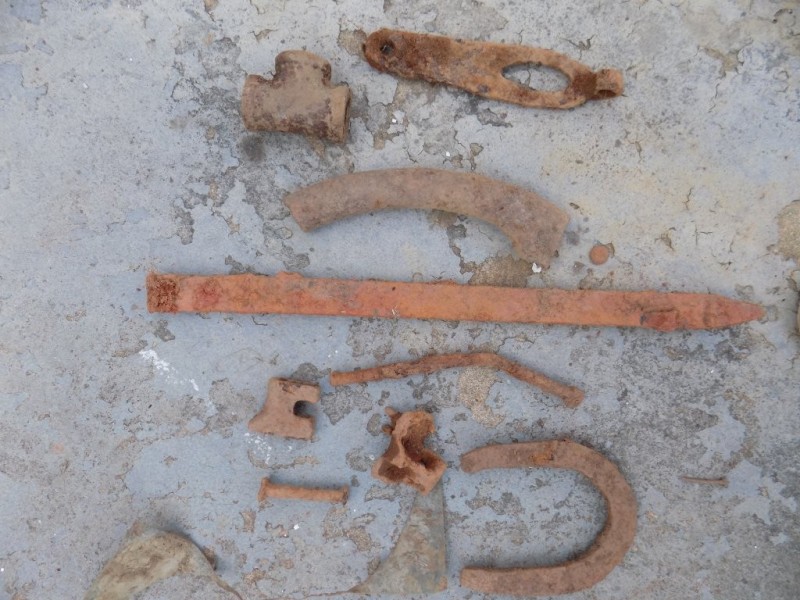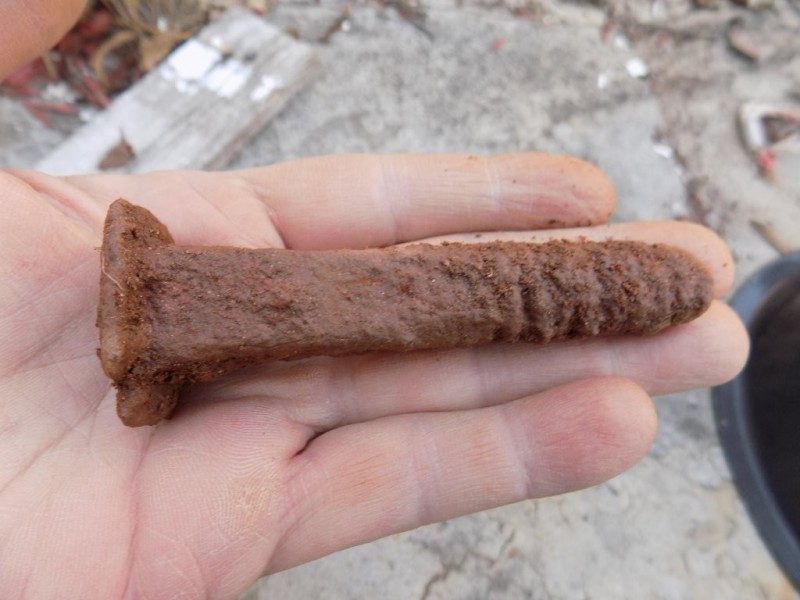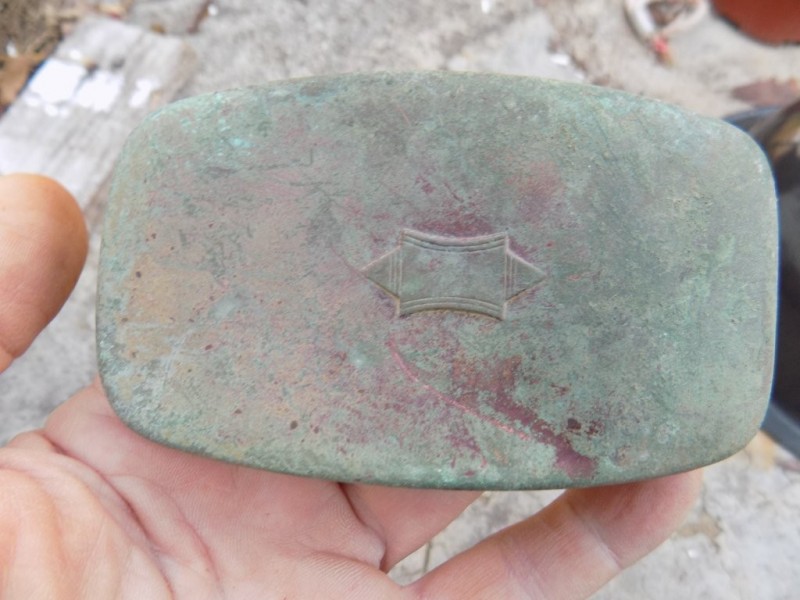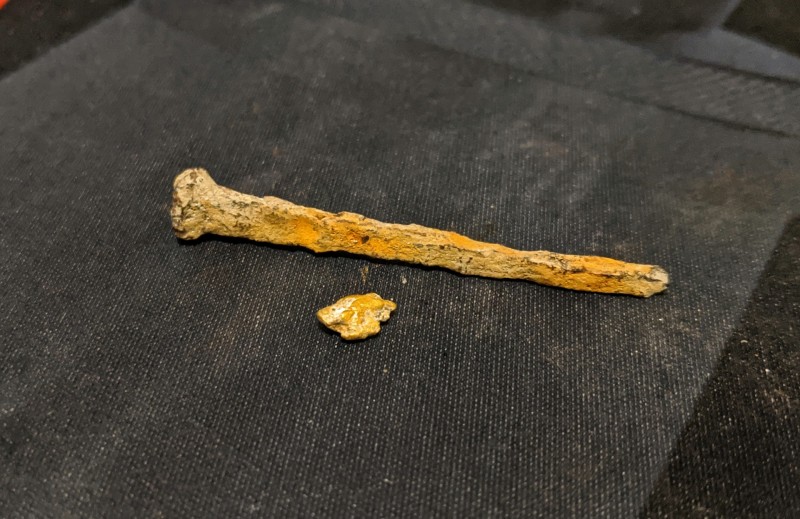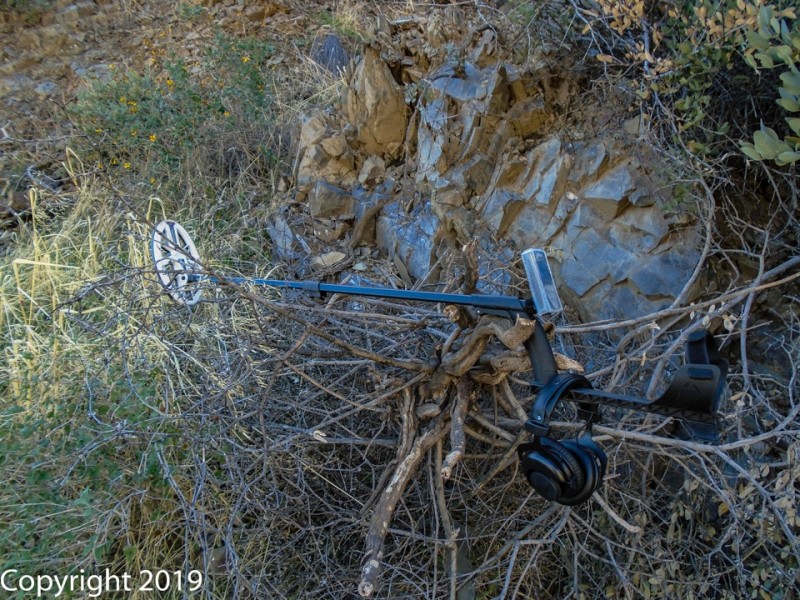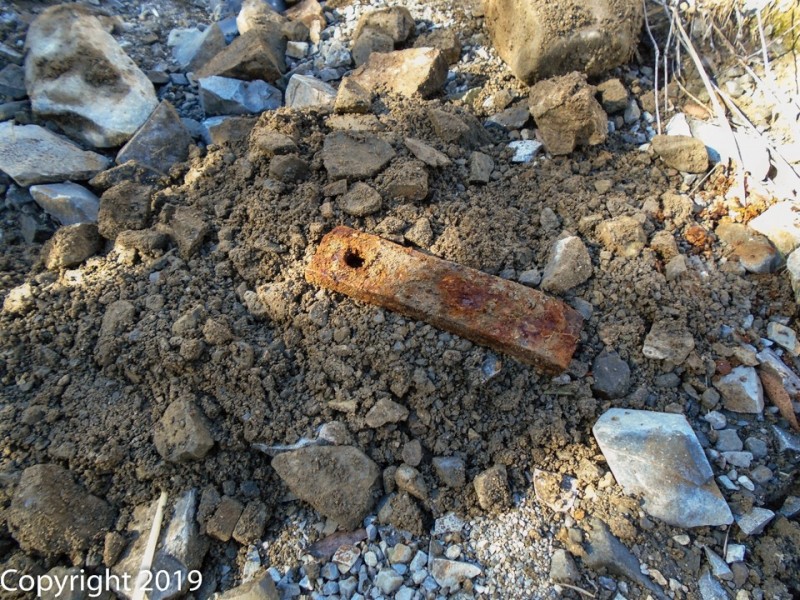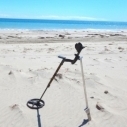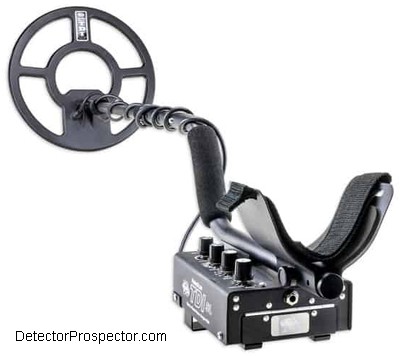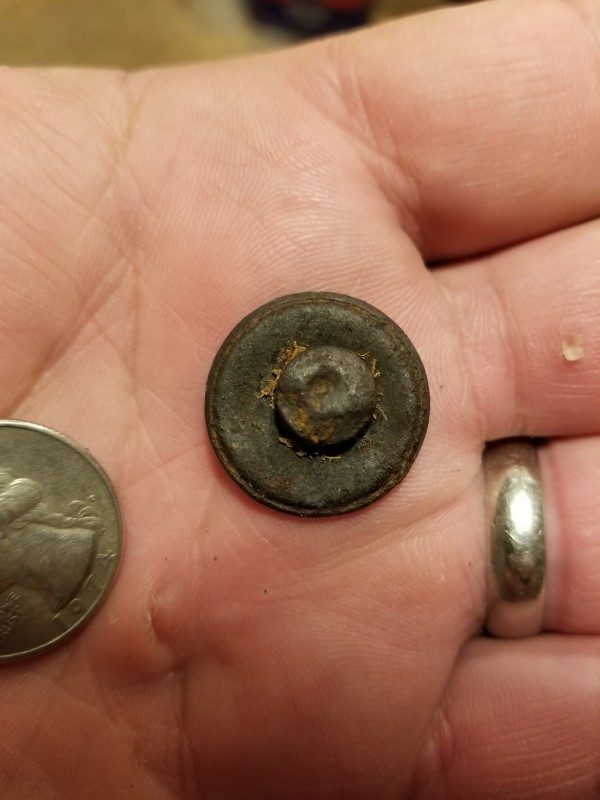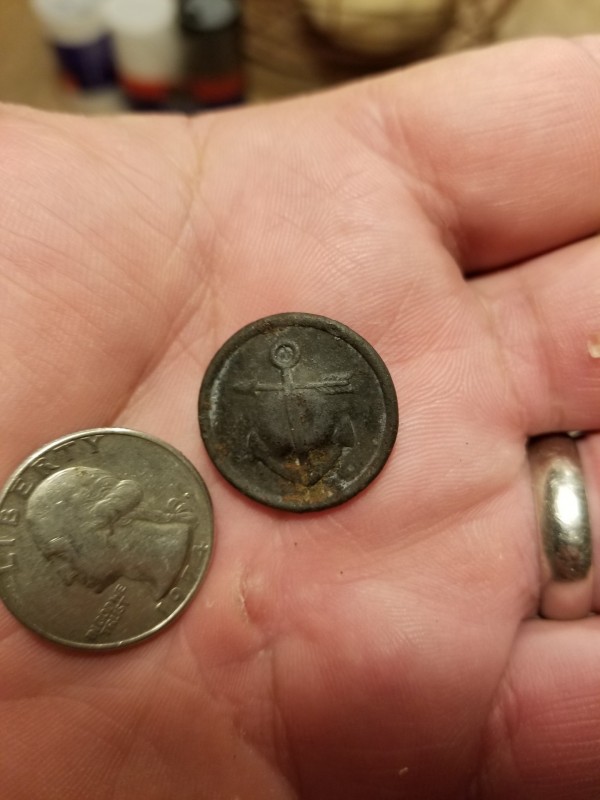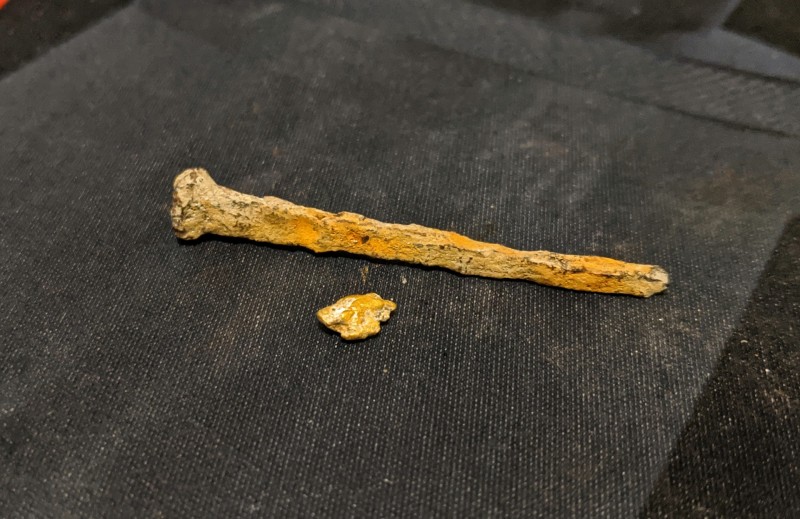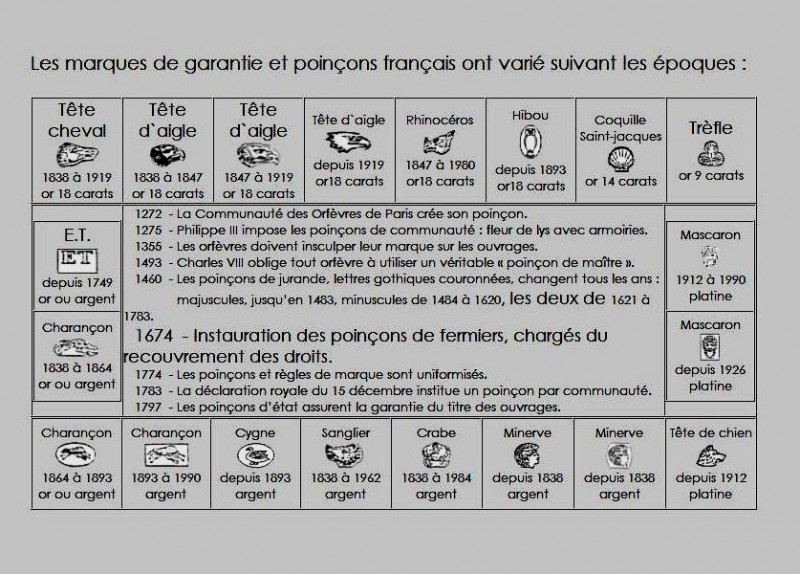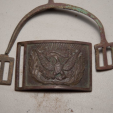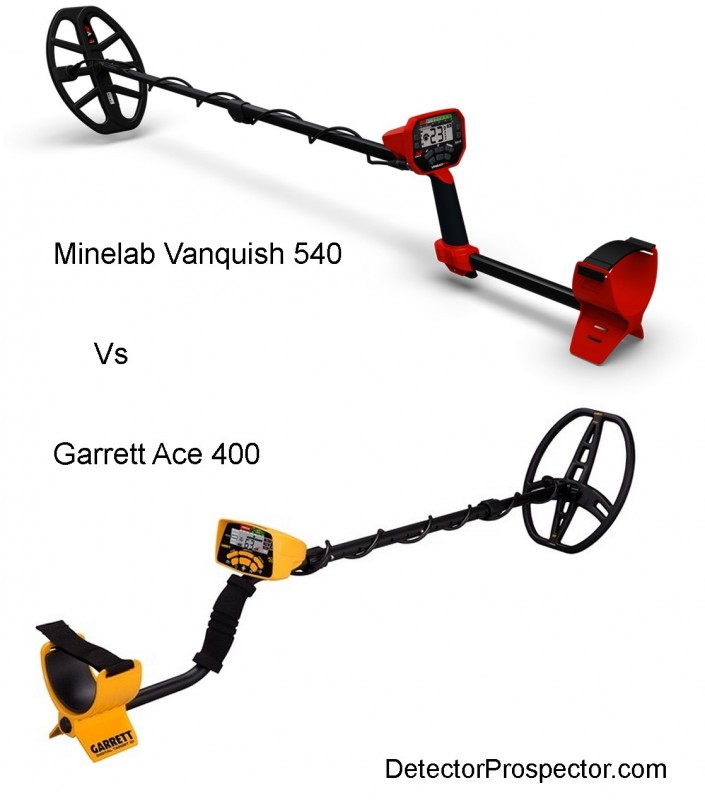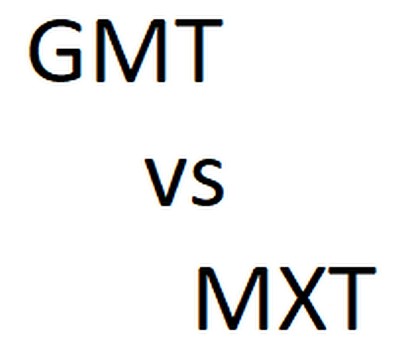Leaderboard
Popular Content
Showing content with the highest reputation on 12/02/2019 in all areas
-
4 points
-
Keep pulling that iron you just might find some old coins. Think the odds are in your favor.3 points
-
Site loads much faster too, nice and clean. Old site almost had an iron grunt to it.3 points
-
Hello metal detector colleagues, I went on the beach yesterday with my minelab safari. I worked in all metal with discrimination from -10 to 0 (iron), sensitivity on 18 and trash density on high. 3 hours later I had dig around 40 holes with pull tabs, so I decided to increase discrimination from -10 to 20. I quitted from finding gold jewelry and I was focused on coins. In one hour I found 10 coins (7.05 euros).3 points
-
Iffy Signals Dec 1, 2019 - We took the Simplex and Vanquish to a 1675 permission and compared some signals throughout the day.2 points
-
I found out that my home has been 2 or 3 churches, Masonic Lodge and back to a church again. I have since turned it into a home but still have the corner stone in the front corner of the place. I have dug up most of the same things that you have and by the sidewalks found silver from the early 1900's and even a 1889 IH within inches of the sidewalk. All over the yard has been burn piles, and next to them I have found coins. I have found a gold charm bracelet, and more coins near the old trees. I have yet tried the parking lots as they are gravel and I know what kind of mess they will leave for my wife to yell about. Keep checking all signals that you get because you will find a wide range of things mixed in with the trash.2 points
-
2 points
-
I'm sure an old GP extreme will still beat this for depth, and you can pick one up for about $1300 here in Oz. I agree with Tony, can't see who will buy the Impulse here in Australia. For it to be of any serious interest to myself and I'm sure other beach hunters, it would need to ID iron at depth consistently accurately, and would need to beat an Equinox, 3030 or even an old Sovereign for depth.2 points
-
A process known as Bioturbation is a very significant factor in coin sink. Essentially, earthworms disturb the soil around the item, until one dry/wet/cold/whatever day, the conditions allow it to drop 2 or 3 mm. Repeat this for 100 years and your target is 20cm ( 8 inches) down. If the ground is inhospitable to worms, the sink is much slower. Unfortunately for us, earthworms tend to live in the top 30cm ( 12" ) of soil, because that's where the plant matter they eat is located.2 points
-
Haha, I was calling myself old, and you are 10 years my senior. I suspect the cut off is about 35ish. Older than that and you didn't get used to Myspace or Facebook growing up.2 points
-
An interesting difference between Garrett US and Garrett Australia sites is the OZ one having the full lineup of NEL coils for the Ace and AT series. Am surprised that there hasn't been a partnership with NEL in the US considering many of their You Tube "users" do run with NEL coils. http://www.garrettaustralia.com.au/nel-coils/2 points
-
Garrett actually has a pretty focused lineup, more so than anyone else.2 points
-
1 point
-
The White's PulseScan TDI was released in 2008 and is still in production as the TDI SL. Prior versions have been discontinued. I was one of the original users of the TDI and still dabble with them to this day. See my story White's TDI at Moore Creek, Alaska for pictures of lots of TDI gold nugget finds. I also have extensive notes on using the TDI for coin detecting at Steve's Guide to White's TDI Coin Settings. The TDI is a unique detector and is seeing use in many applications unforeseen when it first came out. The TDI has been available in several versions but all are basically the same detector as far as how they work. October 2019 Note: White's has a model called the TDI Hi-Q, which is a TDI SL with straight rod, new coil, and tan or camo paint job. See the details here. I am a big fan of competition as I always want more and better detectors from the manufacturers personally, and I think competition is the best way to get better detectors. After Garrett got into the ground balancing pulse induction (GBPI) game with the Infinium people including myself were really after White's to make an entry into the field. I went so far as to visit White's Electronics personally to lobby for such a detector with suggestions on how to get there. Alan Holcomb, the CEO at that time, flew me down at White's expense for discussions on how to proceed with such a project. In particular, I advised that rather than developing something from scratch, it might make more sense to license the existing Goldscan technology from Eric Foster, widely known as "the father of pulse technology" for his early work in the field. Eventually White's did decide to pursue the matter, and I was therefore aware early on that White's was working on a new detector, In 2007 I was sent a prototype unit to evaluate while I was on vacation in Hawaii. I was very impressed not only with the power of the detector but more importantly for me in Hawaii I was very impressed with how stable the detector was in salt water. It was also virtually immune to electromagnetic interference (EMI) issues that had dogged my use of other detectors in Hawaii. White's TDI SL with closeup of control panel (compare to original TDI controls below) My use of previous GBPI detectors, the Minelab models and the Garrett Infinium, made me familiar with how they respond to targets with various tones. Each target generates a dual tone that varies depending on whether the target is above or below the ground balance point that has been set. You will hear either a high tone followed immediately by a low tone (hi-lo), or a low tone followed immediately by a high tone (lo-hi). This dual tone system is effective for most uses but if you get into a target rich location it in effect doubles the number of audio signals coming from the detector. I also had an opportunity in Alaska to visit with Brent Weaver, the main engineer at Garrett responsible for the development of the Infinium. While testing a prototype Infinium I asked him about the dual tones (Garrett now refers to them as "echos") and whether they could be suppressed. He told me the dual tones were integral in how the Infinium worked and that it was not practical to produce a single tone result on the circuit they were working with. White's did end up working with Eric Foster on the development of the TDI. His method is one I like because instead of the dual tone responses generated by the Minelab and Garrett models (hi-lo or lo-hi) the TDI generates one of two tones, either a low tone, or a high tone. The tone depends on whether the target is above or below the current ground balance setting, and therefore there is only a tone difference when the ground balance system is engaged. The ground balance off, straight PI mode has monotone responses. Also, because the ground balance can be set manually on the TDI, this tone "breakpoint" can be shifted by the operator. This allows targets to be separated broadly into two distinct groups. On one hand there are high conductor type targets, like most coins and large steel items, that on the TDI produce a low tone response. The other group is comprised of low conductor type targets, and includes most gold items, US nickels, aluminum, and small ferrous trash. These all produce a high tone response on the TDI. There are far more high tone targets than low tone targets in most locations. I really liked the prototype TDI that I used in Hawaii, in particular the fact that it generated half the audio responses compared to a Garrett or a Minelab. Once again I wondered if one tone or the other could be suppressed. I sent an email to Eric Foster, and was surprised when he told me that not only could it be done, but it would be a very simple thing to implement with a basic toggle switch arrangement. This came about very late in the TDI development, and I lobbied hard for just such a feature to be added. A last second vote was taken by those involved, and probably the last major change on the TDI before it went into production was the Target Conductivity switch. There was no such switch on the tan prototype models. Prototype White's TDI Used by Steve Herschbach in Hawaii Now, I do not want to give the impression I was some kind of major player in the development of the TDI. I was just one of many voices pushing at White's for years to develop a ground balancing pulse induction (GBPI) detector. I am pretty sure though my last second inquiry and little push was what made the tipping point to getting the Target Conductivity switch included, and I think to this day it is one of the most useful and intriguing features on the TDI. It allows for a vast reduction in the number of audio responses in certain situations and in conjunction with the manual ground balance and pulse delay offers a degree of discrimination on the TDI not seen on any other pulse induction detector made today. This makes the TDI a pulse induction machine that can be used effectively for coin detecting, if the operator knows what they are doing and employs some smarts in site selection. I wrote an article entitled Steve's Guide to White's TDI Coin Settings on this very subject. I will not repeat the information here in the interest of keeping this page from getting too long so check out the link. Suffice it to say the TDI has the ability to play tricks and discern targets far beyond what most PI detectors can achieve. Another major feature on the TDI is the ability for the ground balance system to be shut off. The method used to ground balance the TDI in effect subtracts the ground reading from the total readings returned by the detector. This subtractive method does actually steal some depth, which is easily shown in air tests on targets with the ground balance turned on and the ground balance turned off. The closer the target is in relation to the ground balance setting, the more depth is lost. People find this very confusing, as the whole point of ground balancing a PI is to get better depth, right? Original White's TDI Control Panel The way it works is this. In low mineral ground a PI gets maximum depth without using any ground balancing. However, as mineralization increases, depth is affected. The more mineralization, the more depth is lost. Also, ground effects increase. In low mineral ground, the coil may be raised off the ground with little response. In highly mineralized ground, raising the coil even slightly off the ground produces a false signal. Nearly all PI detectors have an audio retune circuit that slowly retunes the audio response to keep it at the set threshold level. Otherwise circuit drift and minor ground variances would require constant retuning. In high mineral ground, the ground produces a response, but the detector compensates as long as the coil is kept at an exact height over or on the ground. If the coil is raised quickly, the audio overshoots when the ground signal is removed and a false signal occurs. This can be a real problem in even ground or in the water where it is difficult to maintain a steady distance above the ground or sea bottom. Hot rocks or wildly varying ground mineralization present an even greater issue. Again, the detector does well as long as the conditions are constant, but when a hot rock or mineralized ground condition like a clay seam enter the picture, a false signal is heard. In areas with lots of hot rocks PI detectors that cannot ground balance are almost useless due to the overwhelming number of false signals. So imagine a PI with no ground balance in low mineral soil. All is well, maximum depth is achieved. Pretend we have the ability via a magic dial to turn up the ground minerals and/or hot rocks in the ground. A point is reached where performance and efficiency is greatly impacted. It becomes impossible to discern good targets from ground signals and false hot rock signals. At such a point, engaging the ground balance circuit gains back the lost performance and efficiency. It does this by eliminating the ground signal and hot rock signals. White's search coils for TDI (from 2018 product catalog) This leads to situations occurring where people use a GBPI detector in low mineral ground and decide they are no better than a VLF. That actually often is true, in that a good VLF in all metal mode will do about as well as a Ground Balancing PI in low mineral ground, if both have similar coil sizes. A GBPI does not come into its own until the ground conditions or hot rocks are such that a VLF operator wants to toss the detector in a gully in frustration. This has been a very long lead explanation to the TDI secret weapon. In low mineral ground, turn the ground balance off! The detector will become extremely stable with a very smooth threshold and become more resistant to electrical interference. Gain may be boosted and a great deal of extra depth achieved in situations that allow for this type of operation, and they are actually very common. This would be the preferred beach mode on most beaches, the exception being beaches with a lot of black sands. The White's TDI in pure PI mode is one of the most powerful straight PI detectors available. The tone differences between targets disappear, and sometimes the ability to differentiate targets is more important than the depth gained by shutting the ground balance system off. But do not overlook this ability to run without ground balance in situations that warrant doing just that as it can really pay dividends to the knowledgeable operator. In 2018 White's responded to long standing demand from customers and released a version of the TDI that is waterproof to 25 feet - the TDI Beachhunter. This is basically a TDI SL in a Beachhunter ID control box. The model weighs more at 5.2 lbs for obvious reasons. The TDI Beachhunter has all the same controls as the TDI SL with the exception of the conductivity switch. This means the TDI Beachhunter signals on all targets, but the dual tone scheme remains to allow the operator to differentiate targets by the sounds. In order to help insure waterproof integrity the coil on the TDI Beachhunter (12" Dual Field coil) has been hardwired into the control box. Forum thread with more information on TDI Beachhunter. White's Electronics TDI Beachhunter - new for 2018 ~ Steve Herschbach Copyright © 2010 Herschbach Enterprises Official White's TDI SL Page White's TDI SL Data & Reviews White's TDI SL Instruction Manual White's TDI SL Special Edition Data & Reviews White's TDI BeachHunter Data & Reviews White's TDI Pro Instruction Manual White's Original TDI Instruction Manual White's TDI Field Manual Forum Threads Tagged "whites tdi" White's Metal Detector Forum Great Post on Batteries For the TDI SL White's TDI Coin Settings Some Commentary On TDI Tuning & Discrimination White's TDI Technical Specifications* Internet Price TDI SL $1189 (Special Edition $1049) (Beachhunter $1199) Technology Ground Balancing Pulse Induction (GBPI) Frequency 3250 - 3370 Pulses Per Second Autotune Mode(s) Slow Motion Ground Rejection Manual, one turn control Soil Adjust Ground Balance On or Off (two position switch) Discrimination Conductivity switch*, 10 - 25 Pulse Delay Volume Control No Threshold Control One turn control Tone Adjust No Audio Boost No Frequency Offset One turn control Pinpoint Mode No Audio Output Speaker, 1/4" headphone socket Hip Mount No (TDI Beachhunter - Yes) Standard Coil(s) 12" Round Dual Field Optional Search Coils Over 100 accessory coils available (TDI Beachhunter has hardwired coil) Battery Rechargeable NiMH & AA Operating Time Up to 6 hours Weight TDI SL 3.5 pounds ( TDI Beachhunter 5.2 lbs) Additional Technology The TDI was designed specifically to be able to use Minelab SD/GP compatible coils. However, performance can vary and the pulse delay may have to be advanced to compensate for coil differences that result in overload readings. TDI Beachhunter is waterproof to 25 feet. Notes *The TDI is unique in that it can suppress audio responses into two different classes. Targets have a high tone or low tone audio depending on how the target relates to the ground balance setting. In general high conductive targets give a low tone and low conductive targets a high tone. The TDI can be set to allow for one response or the other. See White's TDI Coin Settings for more details on this control. *Notes on Technical Specifications - Detailed notes about the specifications listed in this chart. White's TDI SL High-Q Tan metal detector1 point
-
I find myself also using the Orx more and more. I'm finding it pretty equal with the Equinox. The Orx is better hunting gold jewelry in Gold modes. Gold Kruzer 2nd for gold jewelry. Equinox 3rd. It doesn't false either. Better in iron. It's becoming my main detector. Detectors I have: Equinox 800 w/ 11" and 6" coils XP Orx w/ 9" hf coil Gold Kruzer w/ 9.5x5.5 concentric, 9.5x5 dd, 4x7.5 dd coils Lobo STmodded w/ 8" and 5.75" concentric coils1 point
-
1 point
-
1 point
-
Went out for a bit earlier today and found these. The quarter was shallow on edge of what was a small orchard. The locket hinge still works but the photo has disolved away. Locket was pretty deep under a good size rock. Think it was silver plated at one time. Grounds starting to freeze so might be getting close to the end of the season. I'll call it a day when my digger makes a clank sound and I can't dig.1 point
-
Posted 11/17/2019 https://fccid.io/Z4C-0041 Minelab Vanquish 440/540 User Manual1 point
-
Gold found! A 102.3g nugget found with a metal detector and drilling to come. https://stockhead.com.au/resources/lefroy-hits-visible-gold-in-maiden-drilling-at-hang-glider-hill/1 point
-
Steve - You really think any of us are going to give you a year to try it out before you report back to us? Good chance you'll have the entire West Coast cleaned out by then. 😜1 point
-
That field has an unusual soil, very dark and porous, looks very fertile. Anyway, the GB grab was 1, which is also unusual. Typically soils here GB in 50-70 range. Though they say it is not necessary to GB in multi freq? I usually use field 2 mode, which has metal range extended from -9 to 2 by default, I had it set to -9 to 0 manually, but returned to 2 when testing on that difficult target. All it did is silenced the coke, but button did not show up. I have rolled back to v1.5 now and will test that field again. Can’t wait. Thanks a lot1 point
-
Well all I can say is thanks to Le Jag for doing what First Texas is bewilderingly unwilling to do: tell a very interested consumer base about the Impulse AQ going into production. If the machine is what it appears to be, and the goal is to make and sell it, then...?1 point
-
Steve they have the Terra coming out next.....that should be just interesting to watch. Fisher knows they will be competing with MLs big boys there. I just appreciate that Fisher has got others thinking...... who knows where this could go. The high speed VLFs we have now maybe weekend use only lol. You can bet ill be hitting both sides of the island down here with one. Well Fisher will know soon enough if 1 meter is good enough depth in the water. Seriously .... its been awhile since anything has come close to an Eric Foster machine....and this one has alledged disc. It may well be a nitch machine....... but anyone who spends much time on the beach will want one. IF you end up being the only guy on the beach with this machine..... id keep that a secret..... as well as your finds.1 point
-
when fisher will officially publish this detector! There are many important questions to answer, about the battery, tightness, discrimination !!! the best thing is that it is already happening !!!1 point
-
Many of us water hunters arent using a PI for in the water use for one reason.......it dont disc so time vs pay out especially during recent drop isnt worth the tole it takes on the body with most days hunting. NOW..... for me the question will be...... just how much depth will be lost when using disc? Most of the time when a machine has to process a signal there is a good bit of lost depth. It concerns me when someone says we have made it quieter and less sensitivity to ground effects. Did we dumb it down to do this? Ive found thus far all things are pretty equal out there in the water when it comes to most of the machines being used. Here in Fl which is just a different ball game most of us only use a PI during the winter and even then we are selective as to the site. I dare say at the end of the year a regular PI wont produce any more gold.1 point
-
Joe -- LOL! I get it. Like I say, I'm not much of a fan, either, but from an "e-commerce" perspective, there are a lot of Equinox users on Facebook, so I decided to "hold my nose," and start a business page there... 😂 Steve1 point
-
1 point
-
1 point
-
Nice but I also stay away from Facebook. only do forums.1 point
-
Thats my 2nd seated quarter this year and both in pretty descent shape. I was surprised it wasn't worn out more where it was close to the road and only 6" deep or so. Thanks for the info on the locket. The area is an estate that was owned by a dr. during the civil war then by Nuns, now town forest and they hold events there. I believe the orchard was put in by them and long gone now. Just sinkholes where the trees were.1 point
-
Hello, I do not have the US price for Europe, there is the cost of transport customs taxes and of course the seller's margin you will have it much cheaper .. the French seller is undoubtedly optimistic to already take pre-orders ... ----------- concerning the detector until the last straight line he received modifications more stable / even quieter and less sensitive to the soil effect cut the iron / take the gold is now child's play cut leaden balls (25 gr) and take the gold ring 2.5gr 18k cut bullets / flintlock rifle model english 1750 and take the 22k gold coin my last hunt / 3 days ago a ring in white gold 18k / 2.6gr and especially the medal 18k 6gr this medal has a horse head stamp = 1838/1919 he is a jeweler known in France Augis / model of the medal 1907 ((diamond and ruby and a quote from a poem + than yesterday - that tomorrow )) she was laying on the bottom / black sand between 17 and 19 inches // It is much deeper than the TDI (all model 12 / 14.4 volts) 7us all metals / sensitivity maximuum SAT at the slowest I think she was here for a century this medal / perfectly summarizes the system, AQ the ability to detect the gold that is under your feet since always you walk on / at each exit they have been there for 50 years / since a century ....... now = you can hear it 🙂1 point
-
Gents, I agree with you both, on the social media thing. Those of us who weren't children of the "smartphone" age, are generally not nearly as tuned in to social media, etc. Nor do we want to be. I agree with you, Tim, I don't really think anyone much cares what I'm doing, etc., and yet the younger generation places their whole existence, from moment to moment (at least, the "perfect" existence that they "craft" for everyone to see) online. But, from a business/marketing perspective, social media -- particularly YouTube and Facebook -- seem to be very popular ways to advertise and market. So, based on the advice of a couple of others, I went ahead and started a business page. I figured that a drawing would be fun, and it would help to spread the word that my business exists... But, that doesn't mean I can't do a drawing in a different way, in the future... Steve1 point
-
When hunting relics, I personally like to use Field 2 as that Multi IQ profile favors the mid-conductive metals of which most relics consist, namely brass and lead. Park 2 works also, but I prefer Field 2. In hot mineralized ground, I like to also keep one of the Gold modes in my Equinox User Profile slot so I can use it to interrogate iffy signals. I go into more detail about gold mode and how to deal with iron infested sites in this post. I explain why 50 tones (the default tone setting in Field 2 and Park 2) is my preferred tone setup in general here. Although, in highly mineralized ground it may be advisable to simply go with a two-tone ferrous/non-ferrous setup for reasons explained further below. As far as mineralized ground is concerned, you need to assess how hot your ground actually is. Note that there is no real way to tell if your ground is hot using the Equinox alone as high ground balance readings don't tell you definitevely whether your ground is mineralized, you need a magnetite (Fe3O4) level meter and only a few detectors come equipped with those including Deus, Fisher F75, Tek T2 and some others. I hunt Culpeper Virginia which has insanely hot ground that often pegs the FeO meter on my Deus in the fields. It is less mineralized in non-plowed wooded regions but the other thing to note is that mineralized ground phase is usually comprised of highly variable patches of terrain even over very short distances. I usually invoke ground balance tracking on the Equinox to deal with this. Anyway, recognize that the first thing you will lose is target ID at depth. Beyond a certain depth (typically beyond 4 inches if your ground is truly hot) any hit will sound like iron or will have a jumpy or clipped non-ferrous ID component. The next thing you will lose is ultimate detection depth, the depth at which you get any discernable signal at all. This is usually 6 to 8 inches for me, max, at Culpeper depending on the target. If you are digging minie balls at 10", that's pretty good. Most folks under these conditions are using pulse induction machines like GPX's for max depth. Finally, as Steve said, stick mainly with default settings and minimize mode "hopping" until you really gain confidence with the machine. But also don't be afraid to experiment. Try out beach modes and see what that does for you. You will be likely more limited in depth but the lower transmit power may make the machine run more stable in mineralized ground. From a mode standpoint, there are no real wrong answers as the Multi IQ differences between modes are very nuanced and subtle, the most readily noticeable thing are the different tone, discrimination, recovery speed, and iron bias settings between modes. Good luck.1 point
-
Now stop calling me old, I hear enough of that from my grand children. I have been married a couple of times and my wife's granddaughter said that she was older than dirt for her birthday. I never seen a child cry so much because someone took away her cake.1 point
-
I suspect its largely an age thing. I have Facebook because I thought it was a good way to keep up with my daughters that lived out of town. Problem is as soon as I signed up I got friend requests from lots of other family. Pretty soon it was just a time sink, so I just stopped ever going there. You only ever see what people want you to see anyway. Anything really important would still come in a text or call from my kids. I havent posted anything in a couple years and wont because I dont want to give anyone the impression I'm back lol. Lots of people I play poker with got me to join a poker facebook group and check it out but it was the same thing, trying to wade through endless crap to find anything interesting. I think there is a great divide between the older and younger crowd on there tolerance for social media, basically because they were born to it and we weren't. Also the idea of privacy is far different. I dont want people to know what I'm doing, not because I have anything to hide but because it's none of their business. Polar opposite to the whole social media craze. Facebook etc is FAR more useful for marketing, so I completely agree with you doing the promo there. Honestly doing it here probably doesn't reach anyone that doesn't already know about your product.1 point
-
If you feel like starting a "how to" post on what that all means and how to do it I will be an interested party!1 point
-
I just wonder when Garrett will make something truly new. An AT Multi would be nice.1 point
-
Yeah well this is a Minelab forum and you Nokta/Makro fanboys should just stay over on your own forum! My feeling about Vanquish is it nailed it's design goal - choice between Garrett Ace and Vanquish is a no-brainer. Between Vanquish and Simplex I choose Equinox, best of both worlds. Minelab Vanquish 540 vs Garrett Ace 4001 point
-
Not so fast... Not necessarily a universal sentiment. I like the Equinox but of the two value machines, personally prefer the Simplex because, unlike the Vanquish, it is different than the Equinox which I already own. The case could be different for someone who doesn't already have an Equinox. Of course, neither are it's equal. Apples and oranges. [For clarity regarding the referenced quote above - Note that Steve is quoting "iffy signals" so I am referring to the iffy signals' quote which may or may not have anything to do with how Steve feels about Vanquish]1 point
-
Yes, I too remember like abenson a similar thing happened with Equinox showing up in Cabelas (and online) while many dealers still had waiting lists a mile long. One thing that deterred me from jumping on these deals while I was waiting "in line", besides loyalty to my primary detecting equipment dealer, was that Cabelas, as I am sure most of the other chain stores, were not honoring the Minelab veteran's discount of 15%, probably because they did not want to deal with the overhead required of providing the suitable proof of service that ML requires in order for the dealers to recoup the difference from ML. Glad I am not in any way invested in getting one of these as they are completely redundant to and bring nothing to the table vs. my Equinox (I have enough "backup" and "entry level" machines for my friends and family to borrow and since the coils are incompatible with Equinox, there is absolutely no motivation for me, personally, to even think about acquiring this machine). This is bringing back some suppressed bad memories from the Equinox roll out.1 point
-
I know this doesn't help most Equinox users, but when iron gets really bad, I usually just switch over to my Deus (or the less expensive ORX which works just as well) and a smaller coil. This is is why I have been saying for months, that the two detectors compliment each other. I love them both and would not be without both in my truck for any detecting situation. But here are some iron site tips for Equinox/Vanquish users because they can still get the job done: Make sure any ground noise is cancelled out by properly ground balancing your detector for each mode you plan to use. You don't need ground noise (in all metal) pounding your head in addition to all the ferrous hits. You should check this over clean ground, obviously, but that is sometimes hard at thick iron sites. I like using the new F2 iron bias at or near the default setting of 6 (4 to 7 seems to be the sweet spot to preclude masking). Use whatever setting works best on Vanquish-suspect Vanquish uses the new F2-like iron bias filter. Iron bias set too high tends to mitigate the advantage of higher recovery speeds causing non ferrous masking, so it is a delicate balancing act to find the Goldilocks (just right) iron bias setting. Use a higher recovery speed setting if the target density is high. For Vanquish, this means coin mode. Unlike Equinox, Vanquish has basically one Multi IQ mode and the other "modes" (coin, relic, jewelry) are merely differentiated by default recovery speed, tone breakpoint, and discrimination settings. See this post for more info. Unless you are going to remove ALL the iron as you go (impractical for most detecting situations), try using a lower sensitivity to "sift" through the iron and look for shallower non-ferrous finds. The lower sensitivity helps keep the deeper, big iron and shallower iron from overloading and overwhelming the detector. It is counterintuitive and takes some discipline, but lowering sensitivity can be a powerful tool. The threshold feature will alert you to ferrous targets if you have ferrous discriminated out as it blanks when you pass the coil over discriminated iron targets. So if you are seeking out or seeking to avoid the iron patches, using threshold can be useful. Use the horseshoe button to interrogate high tone hits to see if there are iron tones mixed in. Problem is, it could be a single iron target or multiple mixed targets so... Use the pinpointer (not available on the V340) to ascertain whether you have multiple targets in the hole or a single target. And since pinpoint is a non-motion mode, you can trace the outline footprint of the target to tell whether you are swinging over a coin-sized object or a larger iron or aluminum target such as a can or actual horseshoe which can ring up high. If you have an Equinox 800, sometimes I find Gold mode to be useful in thick iron situations as either a primary search mode or something to quickly switch to to interrogate an iffy signal as the VCO-like audio can work similar to pinpoint in revealing target strength or multiple adjacent small targets (though you can't target footprint trace because it is a motion mode) with the added benefit of visual target ID. If target density is high, try using the smaller available coils (e g , 6 inch round for Equinox). Yes depth will be slightly less, but fewer targets under the coil simultaneously helps with reducing coil overload and you might be able to use a higher sensitivity and lower recovery speed. Note also, that if you use a different sized coil, your sweet spot iron bias settings might also change. Final tip, don't be afraid to wade into the iron patches. Since most low recovery speed detectors have trouble there, it is perhaps your best bet to find a shallower keeper that has been masked all these years. It takes patience and use/honing of the skills above plus you WILL be digging a lot of iron regardless (and getting it out of your way), but the reward for that can be huge. Even if you get a 99% probable iron signal the only way to know for sure is to dig it and see what else might be in that hole. Hope these help and give you some ideas how to attack an iron site with your Equinox/Vanquish.1 point
-
Being on the other side of the planet, I have never heard of Nothing AZ so I googled it. Apparently this was on a town sign in Nothing. It gave me a good laugh. 🙂 "Town of Nothing Arizona. Founded 1977. Elevation 3269ft. The staunch citizens of Nothing are full of Hope, Faith, and Believe in the work ethic. Thru-the-years-these dedicated people had faith in Nothing, hoped for Nothing, worked at Nothing, for Nothing."1 point
-
I'll use cash till the day I die! No plastic for me. Drives the cashiers mad when I give them odd cents to even out my purchase not to get pennies in change. They often give me more back in change then I was supposed to get originally. GaryC/Oregon Coast1 point
-
Well, I guess you ought to put this old character in the line with others who are finding their XP Deus or ORX to be a more-often-grabbed device. More than age affecting my hearing, I used to do a lot of shooting w/o ear protection, then had five incoming mortar rounds impact about 10-15 yards to my left one noisy evening in Viet Nam, and an on-the-job injury 9½ years ago ruptured my right ear drum that healed with scar tissue on the ear canal and ear drum. The USAF told me I was deaf in '82 thru '86 on the annual exam for veteran summer hire at Hill AFB, and so did the ear surgeon after my injury .... so I guess I qualify for hearing impaired. That said, I have one of my ORX control units mounted on the operating rod and the other in an XP arm band. I prefer to use my Gray Ghost XP headphones or 2nd pick would be the Back-Phones. However, in very quiet areas that are traffic-free and wind-free, I do sometimes just hunt with the speaker audio only. Overall, no problems hearing most response with the exception of some of the weaker or fainter deeper targets that might sometimes elude me. Monte1 point
-
1 point
-
You are creating a virtual search coil with the box spacing. Two people can hold the boxes 10 feet apart for instance to create a 10 foot or 20 feet apart to create a 20 foot coil. Again, refer to the manual. The rod set is creating a 4 foot coil but you could make a 6 foot coil if you wanted. Like all coils, the larger the coil the deeper you go, but the larger the item needed to trigger a signal. Smaller configurations are more sensitive to smaller items but don’t go as deep.1 point
-
The two best-selling professional metal detectors in Alaska over the last twenty years are probably the White’s Electronics GMT and White’s Electronics MXT. This is because a set of local circumstances favored these two detectors. These two machines are based on the same circuitry, but have very different design goals and therefore features which determine which might be the best choice. Since the sole purpose of the GMT is prospecting, it operates at a high 48 kHz for extreme sensitivity to small metal items... hopefully gold nuggets. It is not a "gold-only" machine in that it picks up all metals. The "gold-only" detector has yet to be invented. It does however have a very efficient system for separating ferrous (iron or steel) items from non-ferrous items (gold, copper, silver, lead, aluminum, etc.) In theory the GMT could be used for other types of detecting, but it has a couple serious problems. First is the fact that it is so sensitive to small metal! Any attempt to use it for typical coin detecting would leave a detectorist quickly frustrated. Imagine a foil gum wrapper sucked into a lawn mower, shredded, and spread about. Parks and other areas popular with coin hunters are full of tiny aluminum trash. Every one of these items will sing out loudly on the GMT. Coin detectors are purposely designed not to pick up these tiny non-ferrous items as 99% of the time they are trash. The GMT also is very sensitive to wet salt sand, and so is useless for most beach detecting. It would not be impossible to use the GMT for other detecting tasks, but in general it really should not be considered for anything other than nugget detecting. The MXT was built using the GMT circuitry. An advanced LCD readout discrimination system similar to that on top-of-the-line coin detectors was added. The frequency was lowered to 14.7 kHz to increase the sensitivity to coin type targets and to moderate the problem of being too sensitive to tiny trash. But the frequency is still well above that of standard coin detectors which work around 6 kHz so the MXT retains much of the GMT ability to hit gold targets. The MXT has three distinct modes: Coin & Jewelry, Relic, and Prospecting. Each mode dramatically changes both the sounds and the LCD readouts generated by different targets. The Coin & Jewelry mode is very much like any standard coin detector, but with a better than normal sensitivity to gold coins and gold jewelry. The Relic mode is a rather unique dual tone mode that operates in both all-metal and discriminate modes at the same time. That alone is subject for another article! The Prospecting mode in effect turns the detector into a GMT, but one that runs at a lower frequency and that lacks a manual ground balance. And the MXT has a special Salt setting to allow it to work on those beaches. White's GMT versus White's MXT The GMT is admittedly superior when it comes to picking up small gold. It can hit specks weighing less than 1/10th of a grain (480 grains per Troy ounce) while the MXT will need nuggets weighing 2-3 grains to get a decent signal. But on the flip side, the MXT may very well be the superior unit for large nugget detecting. The lower frequency actually is smoother in mineralized ground, and in particular does not produce as many weak variations in the threshold in mixed cobbles as the GMT. The drawback of higher frequencies is that while small gold produces a sharper response, so do hot rocks. The manual ground balance on the GMT is very helpful for hitting those tiniest specks, but less useful for larger gold. If larger gold nuggets are the goal, then the MXT is every bit equal, if not better than the GMT in overall performance due to the smoother ground handling capability. It’s not that the MXT goes deeper, it just has less issues with hot rocks while still being able to hit those larger nuggets. In milder ground the GMT reigns supreme. For Alaska those wanting to go places like Crow Creek or Mills Creek and have a chance of getting gold, any gold at all, will be best served by the GMT, especially if paired with the little 4” x 6” Shooter coil. It will get the gold in these heavily hunted areas, and will hit gold the MXT will miss. But if versatility is important, or chasing large gold nuggets in tailing piles at Ganes Creek is the goal, the MXT is the way to go in my opinion. It is simply one of the best all-around detectors I have ever used. The White’s MXT Engineering Guide is full of interesting information on the development of the GMT and MXT and provides a rare look at what goes on behind the scenes at a metal detector company. ~ Steve Herschbach Copyright © 2010 Herschbach Enterprises1 point
-
In general if ground is quiet enough I prefer a VLF. Apparently I coined the phrase “use a VLF when you can, and a PI when you have to”. If you use a VLF you will run into ground where you NEED a PI. When it happens you will know it. Modern PI detectors are getting close to VLF type performance on small gold, and once you consider minerals can do better on small gold than a VLF. The ability to hit small gold with a PI is a good thing since minerals can destroy what advantage a VLF may have in theory. All detectors struggle in bad ground, even a PI and yes that includes Minelab's. Otherwise Minelab would not have been able to release so many models over the years adding settings for more and more types of ground. So saying PI might struggle in some ground is just the truth and applies to all detectors. By all accounts the QED is a decent PI so I would not overthink it too much.1 point
-
Recently purchased the XP ORX. A family member gave me a generous dollar amount Amazon gift card. I had nothing to spend it on since I'm not a Prime customer and I was sort of missing my former Deus. I had read a lot of speculative reviews (how can you write a review without having one in your hands to use) and some really negative ones too which had lots of seemingly inaccurate information. So I was eager to give the ORX a try once it became possible, money wise. I sold my Deus because of the lack of ID normalization for the HF coils which made coin and jewelry detecting no fun with them. Those coils were great for gold prospecting and I loved the packability of the Deus. The ORX really does have full ID normalization for all four search modes and all of the 21 frequencies I have tried using the elliptical HF DD coil. It has a much improved numerical target ID screen and gives accurate numbers and tones down to 4" using either of the coin modes in the moderate to highly mineralized dirt where I detect in the Rocky Mountain region. It outdoor air tests and test bed tests very well on .2 gram to 1 gram nuggets and lead in both gold modes at 68kHz and is comparable in depth to the Makro Gold Kruzer and Equinox 800 (6" coil). The iron probability bar and the large numerical target ID are displayed when a shallow to fairly deep target is detected in all of the 4 search modes and the two customizable modes. There is no horseshoe graph, XY graph, microscopic mineralization bar, or small, hard to see target ID numbers on the ORX. It comes with two gold modes which are based on the Deus gold field program. One is for milder soil conditions and the second gold program is for highly mineralized areas and smaller gold. It also comes factory preset with the Deus Fast and Deus Deep programs which work very well in my area. It also has a salt mode when needed. There are no adjustments for audio response and the silencer is adjusted when reactivity is adjusted in the Coin Fast program. It has three tone audio which may sound very limited to long-time Deus users but works very well. US nickels and almost all aluminum trash and gold jewelry down to about 4" depth register as medium tone. Zincs up to large silver coins and jewelry register as high tones. The target ID numbers are also very stable down to 4" here. They should be stable much deeper in mild soil. Modern nickels hit hard on 62-63 while most coin sized or bigger aluminum trash hits between 65 and 80 which is a nice large range. Smaller aluminum seems to hit in the 40 to 60 range while small foil hits in the 30s. I have dug several 1/4" in diameter foil wads which sounded great at 6" in Coin Fast at 28kHz. Being a micro jewelry/gold prospector, this is very encouraging. So, I can't wait to get the ORX and its gold modes up to some prospecting areas in the Colorado mountains this summer. It comes with simplified wireless back phones that just control the volume level. I couldn't see the display on the WS4 module without magnification anyway so not having that problem to deal with is fine with me. The back phones work well. The ORX remote control has the same 1/8" jack as the Deus so that is an option for wired headphones along with using the Deus wired headphone adapter card that is an accessory and attaches to the back of the ORX back phone module the same way as the Deus WS4 puck controller. It will pair and has advanced functions when using the Mi6 Pinpointer also. At 1lbs 14 oz, it feels a lot lighter than the Deus, has a great, easy to see target ID/iron probability display, HF coil ID normalization and is simple to setup without all of the sometimes cumbersome audio features of the Deus. The only adjustments I have made coin and jewelry hunting are slight frequency shifts and lowering of the sensitivity in highly mineralized areas. I have not experienced any EMI problems at all above 28 kHz. 14 to 17 kHz is a little more chatty of course, but can be controlled. Despite much of the speculative and negative pre-release opinions, the ORX is an outstanding selectable multi frequency, multi purpose detector that is a joy to use and have success with, without wondering most of the time if I have it setup correctly. For me and my detecting needs, it is actually an improvement over the Deus not just a simplified Deus and it definitely isn't a DPR 600 which uses much of the same display platform as the Deus and has four single tone threshold based all metal modes for prospecting and no coin/jewelry modes. The ORX has all of the audio sensitivity of the Deus if you were to set the Deus up in three tones. So, it looks a lot like a Deus, sounds like a Deus, detects like a Deus and swings like one too. It has been a lot of fun so far. Jeff1 point



